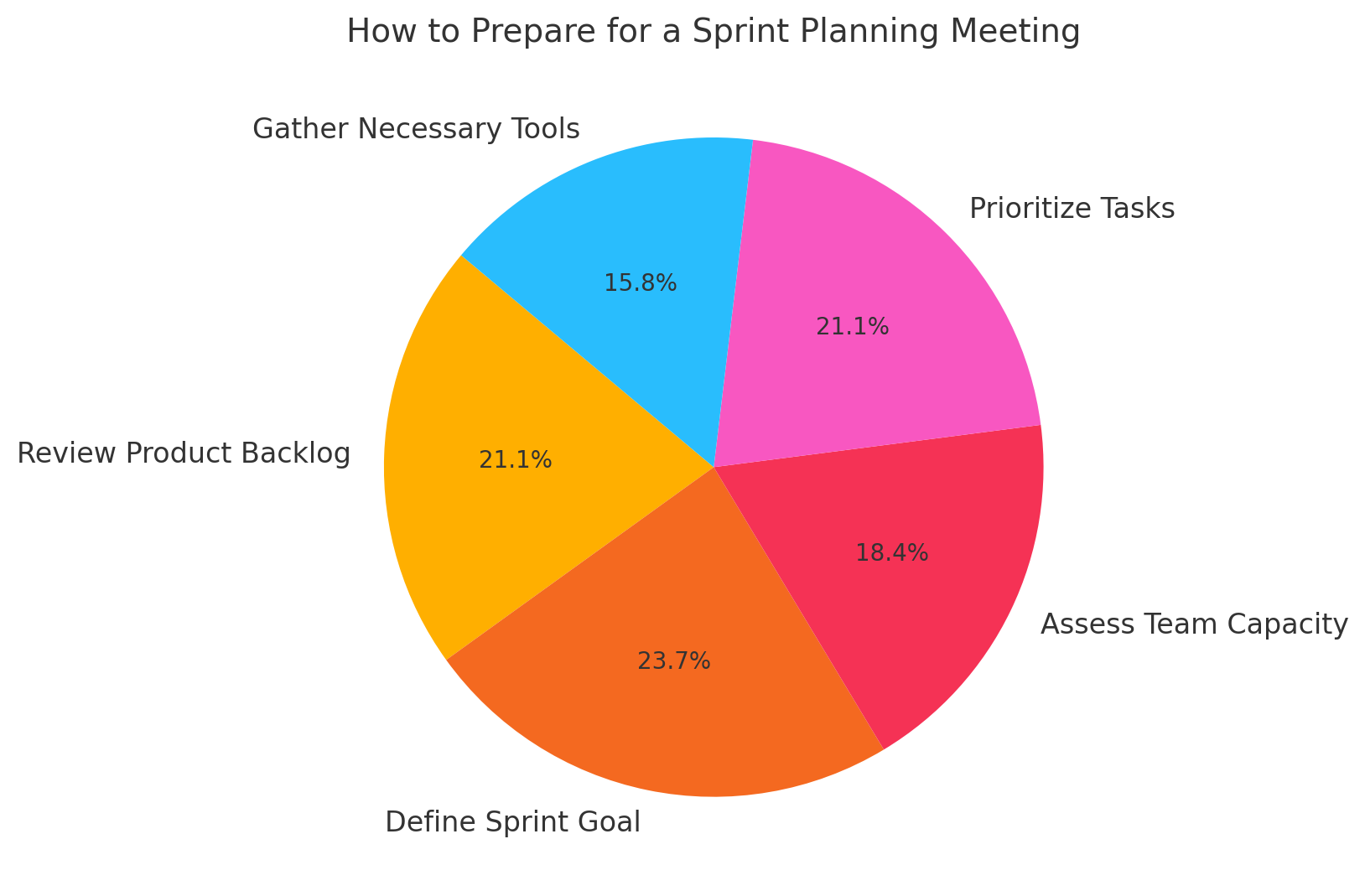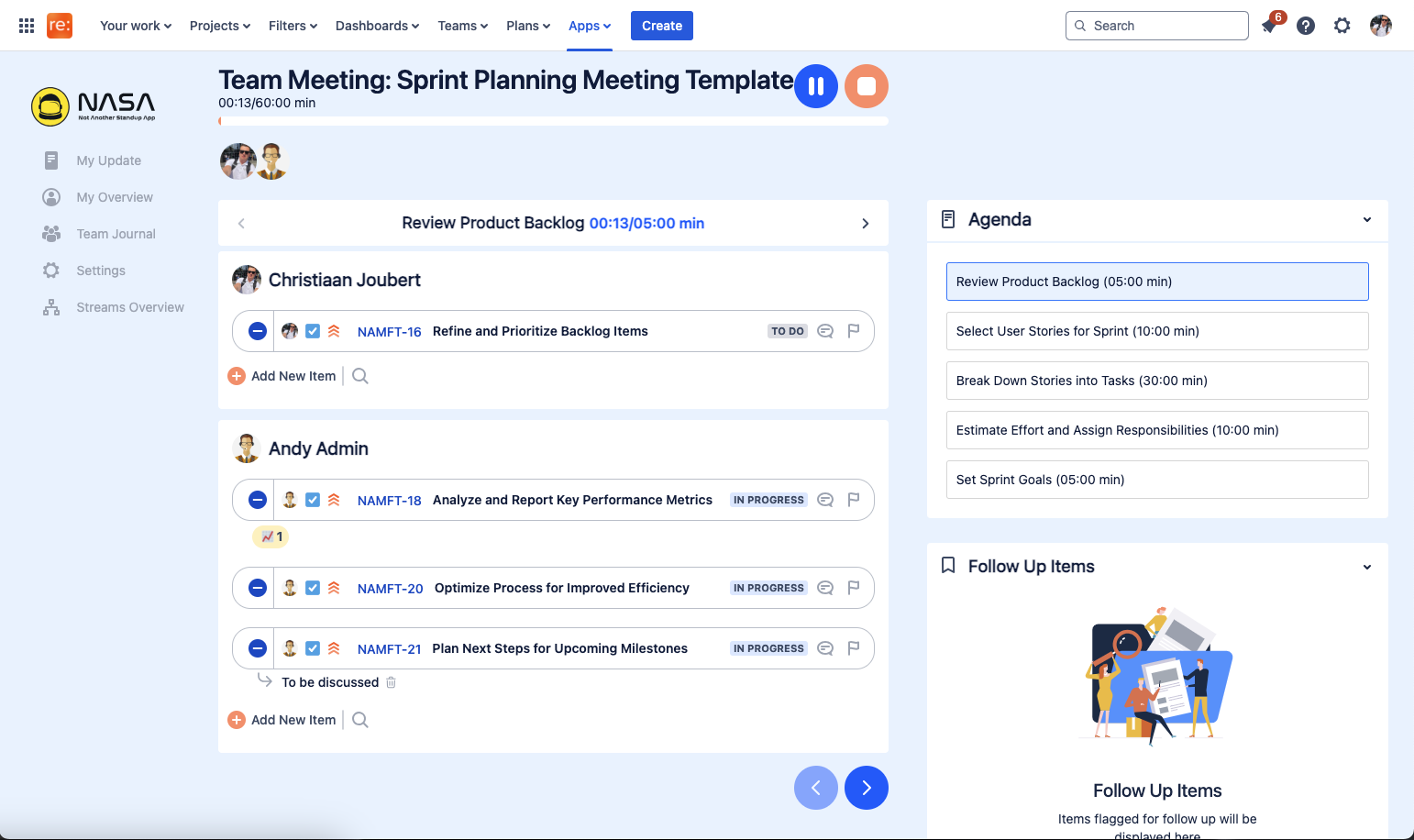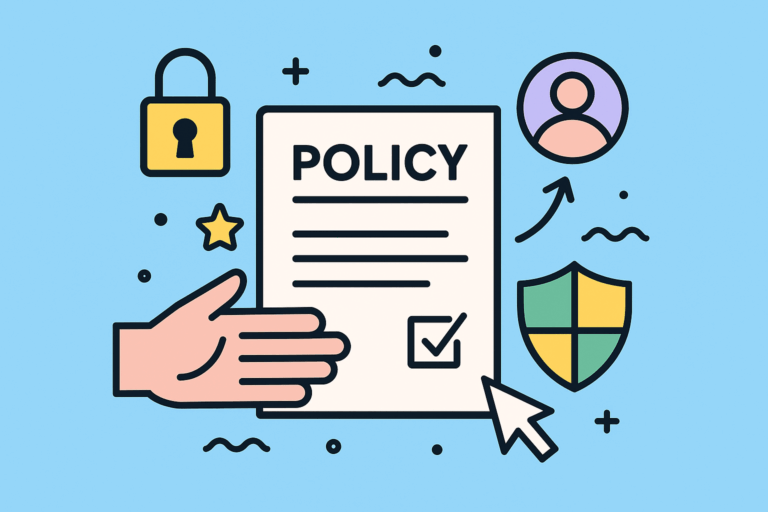Sprint Planning Mastery: Best Practices and How NASA Agile Meetings for Teams Elevates Your Success
Sprint planning is the essential kickoff for every Agile sprint, where teams align their goals, define tasks, and set a clear plan for the weeks ahead. Known as one of the key Agile ceremonies, sprint planning ensures that the team works toward a shared purpose with clarity and focus. In this article, we’ll explore why sprint planning meetings are crucial, who should attend, and how to conduct them effectively, with a spotlight on why the NASA Agile Meetings for Teams app is a powerful tool for sprint planning success.
Key Takeaways
Sprint planning meetings are critical for setting a clear sprint goal, defining tasks, and aligning team members around a shared roadmap.
Core participants in sprint planning include the Scrum Master, Product Owner, and development team members, whose collaboration ensures realistic commitments and actionable plans.
To enhance sprint planning, the NASA Agile Meetings for Teams app offers tools for task prioritization, capacity tracking, and real-time collaboration, making meetings more efficient and outcome-driven.
Understanding Sprint Planning Meetings
Sprint planning is the first meeting of the sprint cycle and answers two fundamental questions: What can we achieve this sprint? and How will we achieve it? It is a collaborative process where the Product Owner, Scrum Master, and development team come together to define the sprint goal, review the backlog, and select tasks for the sprint.
The primary purpose of sprint planning is to create a shared understanding of priorities, tasks, and timelines. This meeting provides a structured opportunity to break down complex projects into manageable steps, ensuring that the team starts the sprint with clear expectations and alignment.
Sprint planning meetings are more than logistical sessions—they are foundational moments for strategy and execution. By preparing thoroughly and focusing on actionable outcomes, teams can ensure that every sprint starts on the right foot.

Importance of Sprint Planning
Sprint planning meetings are critical for building alignment and driving productivity. They provide a space for teams to define priorities, identify dependencies, and distribute tasks effectively. For example, a team without proper sprint planning may encounter misaligned goals or overlapping efforts, resulting in inefficiencies and delays.
When done well, sprint planning fosters collaboration and accountability. Teams have the opportunity to voice concerns, set realistic expectations, and commit to tasks confidently. These meetings also minimize mid-sprint disruptions by addressing potential risks upfront.
Ultimately, sprint planning bridges strategy and execution, enabling teams to work cohesively toward meaningful goals. The result is not just a productive sprint but also a stronger, more collaborative team dynamic.
Key Objectives of a Sprint Planning Meeting
The main objective of a sprint planning meeting is to define a clear sprint goal. This goal serves as the North Star for the sprint, guiding decisions and efforts. For instance, instead of setting a broad objective like “Improve user satisfaction,” a more effective sprint goal might be “Launch a feature update to improve the product rating by 10%.”
Another key objective is to select and prioritize tasks from the backlog that align with the sprint goal and team capacity. This ensures the team is focused on delivering the most valuable outcomes. Sprint planning also provides an opportunity to address potential challenges, dependencies, and timelines, enabling a smooth execution process.
By focusing on these objectives, teams can ensure that their efforts are well-directed and their sprint begins with clarity and confidence.
Who Should Attend a Sprint Planning Meeting
The effectiveness of sprint planning depends on the presence of the right participants. The Product Owner is responsible for presenting the refined backlog and explaining the priorities and value of each item. They play a critical role in ensuring that the team’s efforts align with stakeholder goals.
The Scrum Master facilitates the meeting, ensuring discussions stay productive and focused. They also address potential roadblocks and ensure the team adheres to Agile principles. Finally, development team members contribute by estimating task effort, identifying dependencies, and committing to the sprint plan.
Limiting attendance to these core participants fosters open communication and prevents unnecessary distractions. Their collaboration is key to creating a realistic and actionable plan.
Roles and Responsibilities
Each participant in sprint planning has specific responsibilities. The Product Owner prepares the backlog, clarifies requirements, and prioritizes tasks to align with project goals. The Scrum Master guides the meeting, encourages participation, and ensures the discussion remains constructive and on track. Development team members assess feasibility, estimate task effort, and commit to deliverables.
These roles work together to ensure the meeting is productive and results in a clear, achievable sprint plan.
Preparation Steps
Preparation is the foundation of a successful sprint planning meeting. The first step is ensuring the backlog is well-refined. The Product Owner should prepare and prioritize tasks based on their value to stakeholders and the sprint’s overall goal. Tasks should be clear, specific, and actionable, avoiding ambiguity that could lead to confusion during execution.
Next, the team should review the backlog ahead of the meeting. This allows team members to familiarize themselves with the work, identify potential dependencies, and come prepared with questions or suggestions. Reviewing team capacity is also critical. The Scrum Master should account for any planned absences, holidays, or other commitments to ensure that the workload is distributed realistically.
Gathering data, such as performance metrics from previous sprints, can help inform planning. This data provides insight into how much work the team can realistically commit to and highlights areas for improvement. With these steps in place, the team can approach the sprint planning meeting fully prepared and focused.

How to Conduct an Effective Sprint Planning Meeting
To conduct an effective sprint planning meeting, begin by defining the sprint goal. Collaboratively setting this objective ensures that everyone is aligned on the sprint’s purpose and priorities.
After defining the goal, review the backlog to select high-priority tasks that align with the team’s capacity. Break down these tasks into smaller, actionable items. For instance, instead of assigning “Develop reporting module,” the team could divide it into subtasks like “Design report templates,” “Build backend APIs,” and “Test report generation.”
Assess team capacity realistically, factoring in individual workloads and external commitments. Address dependencies or risks during this process, ensuring that contingencies are in place to handle potential challenges. Finally, summarize the plan, confirm commitments, and ensure everyone understands their roles and responsibilities.
How NASA Agile Meetings for Teams Enhances Sprint Planning
The NASA Agile Meetings for Teams app is designed to simplify and enhance sprint planning. With customizable templates, it helps teams structure their meetings, ensuring that all critical elements—like backlog review, capacity planning, and task prioritization—are covered efficiently.
NASA’s real-time collaboration tools enable team members to provide input, estimates, and feedback directly during the meeting, fostering engagement and participation. Its capacity tracking feature offers a visual overview of team availability, helping avoid overcommitment. Seamless integration with tools like JIRA ensures that selected tasks align with ongoing project management workflows.
The app also offers intuitive visualizations that simplify the prioritization process, ensuring teams focus on the most valuable tasks. By using NASA Agile Meetings for Teams, you can transform sprint planning into a streamlined, collaborative, and outcome-driven process.

Summary
Sprint planning meetings are essential for setting the foundation of each sprint. They align the team around shared goals, define tasks clearly, and address potential risks, ensuring the sprint starts on a strong note. By following best practices for preparation, facilitation, and execution, teams can make these meetings more productive and effective.
The NASA Agile Meetings for Teams app takes sprint planning to the next level, providing tools for real-time collaboration, capacity tracking, and task prioritization. Its user-friendly design and powerful features make it an invaluable asset for Agile teams.
Master Your Sprint Planning Meetings Today
Sprint Planning meetings aren’t just scheduling sessions—they’re the foundation for team alignment, actionable priorities, and successful sprints. Elevate your planning process with NASA Agile Meetings for Teams, the ultimate tool for seamless collaboration, clear goal-setting, and efficient backlog prioritization.
See NASA in Action: Schedule a Demo to experience how it can streamline your Sprint Planning meetings and set your team up for success.
Learn More: Visit our Product Page for expert tips on optimizing sprint workflows and maximizing productivity.
Download Now: Get NASA Agile Meetings for Teams directly from the Atlassian Marketplace and start planning smarter today.
Ready to transform your Sprint Planning meetings? Explore these resources and drive your team toward consistent sprint success.
Frequently Asked Questions
Why are sprint planning meetings important?
Sprint planning meetings align teams around clear goals, ensuring everyone understands what needs to be done and how it will be accomplished. They foster collaboration, accountability, and efficiency.
Who should attend sprint planning meetings?
The Scrum Master, Product Owner, and development team members are the key participants. Their collaboration ensures realistic plans and actionable outcomes.
How does NASA Agile Meetings for Teams improve sprint planning?
NASA Agile Meetings for Teams provides templates, real-time collaboration tools, and capacity tracking, streamlining the planning process and improving efficiency.
What’s the ideal duration for a sprint planning meeting?
The meeting duration depends on the sprint length. A good guideline is two hours per sprint week (e.g., four hours for a two-week sprint).
How can teams ensure successful sprint planning?
Prepare thoroughly by refining the backlog, setting a clear sprint goal, and using tools like NASA Agile Meetings for Teams to facilitate discussions and track progress.




